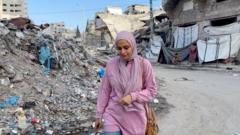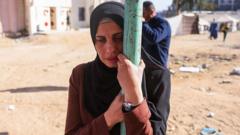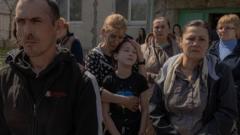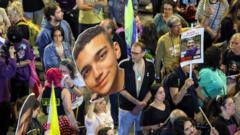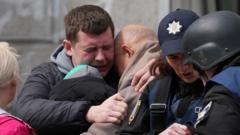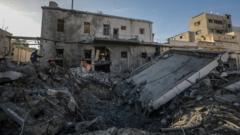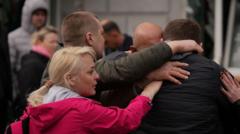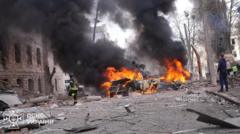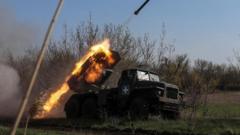Amid repression and propaganda, locals resist the erasure of their Ukrainian identity through underground movements, all while facing severe dangers.**
'Life Under Occupation: The Fight for Ukrainian Identity'**
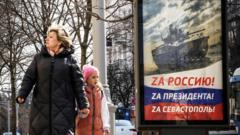
'Life Under Occupation: The Fight for Ukrainian Identity'**
Brave voices reveal the harsh realities of living in Russian-occupied Ukraine.**
Rising tensions in occupied Ukraine reveal a stark landscape where daily life is overshadowed by fear and repression. Residents, like Maria—a pseudonym to protect her identity—express the anguishing reality of life under Russian rule, where even cultural traditions and holidays are suppressed. The Kremlin's military occupation is marked by stringent control, aimed at erasing Ukrainian identity and replacing it with pro-Russian sentiment.
As the United States continues to pursue diplomatic solutions for peace in Ukraine, those enduring the Russian occupation navigate everyday life under dire circumstances. Consequently, the specter of potential territorial concessions looms large over government discussions, with Moscow eager to retain its grasp on regions like Donetsk, Luhansk, Kherson, and Zaporizhzhia.
Living under constant surveillance from Russian authorities, residents take extreme caution when communicating, fearing repercussions for even the slightest expressions of dissent. The risk is not only psychological but often fatal—many Ukrainian activists have been imprisoned or killed for opposing the occupation.
Sofia, residing in the UK away from her family in the occupied Zaporizhzhia region, shares how contact with her parents has become perilous since they refuse Russian passports, making them vulnerable to both the Russian security service and the general dangers of occupying forces. Similarly, other testimonies reveal that family members in occupied territories feel pressured to conform to state narratives, altering their behavior out of fear for their lives.
The Kremlin's propaganda efforts have intensified, with the installation of surveillance technologies to monitor dissent, underlining the oppressive atmosphere residents face. This oppressive regime has led to the rise of various underground resistance groups, including all-female movements like Zla Mavka, who courageously distribute anti-Russian material in various occupied regions.
Despite the risks and the overwhelming presence of Russian propaganda that fills public spaces, these resistance efforts highlight the resilience and determination of Ukrainians clinging to their cultural identity. A notable example is the Yellow Ribbon movement, which persists in disseminating Ukrainian symbols amidst pervasive repression.
As the battle for freedom and identity plays out, the harrowing voices of those living in occupied Ukraine underscore the ongoing struggle against coercive narratives and the yearning for liberation. The fight remains not just for territorial integrity but for the very essence of what it means to be Ukrainian in a land rife with hostility.



